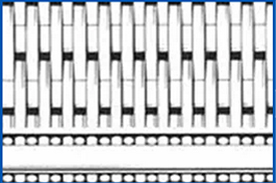Каст . 21, 2024 04:42 Back to list
High-quality OEM Wire Mesh Solutions for Various Industrial Applications
Understanding OEM Wire Mesh An Insight into Quality and Applications
OEM (Original Equipment Manufacturer) wire mesh has become an essential component in various industries due to its versatile applications and undeniable strength. While some may view wire mesh as a simple product, it is crucial to understand the depth of technology, manufacturing processes, and applications that make OEM wire mesh a preferred choice in numerous fields.
What is OEM Wire Mesh?
OEM wire mesh is a type of wire screen manufactured specifically for original equipment manufacturers. These meshes are tailored to meet the unique specifications of a variety of applications, ensuring that the products are not only functional but also reliable. The primary benefit of OEM wire mesh is its customized nature, allowing manufacturers to obtain wire mesh solutions that fit their exact needs.
The manufacturing process involves the use of high-quality materials, such as stainless steel, aluminum, or other metal alloys. These materials are selected based on their strength, resistance to corrosion, and overall durability, making them ideal for settings where wear and tear are inevitable.
Types of Wire Mesh
There are various types of wire mesh produced for OEM applications, including
1. Welded Wire Mesh This is created by welding wire intersections at each joint, providing a sturdy and robust structure. Welded wire mesh is commonly used in construction, fencing, and as reinforcement in concrete.
2. Woven Wire Mesh Produced by interlacing wires, this type of mesh is typically more flexible and customizable. It serves applications in filtration, sieving, and security.
3. Expanded Metal Mesh Made from a solid sheet of metal that is slotted and stretched, this type provides excellent airflow and visibility, often used in architectural applications and safety barriers.
4. Fiberglass and Plastic Mesh Although not metallic, these non-metal options provide ideal solutions for specific needs, such as lightweight barriers and screens, while resisting environmental damage.
Applications of OEM Wire Mesh
oem wire mesh 4

The applications of OEM wire mesh are extensive, spanning multiple industries. Here are some notable examples
1. Construction and Building OEM wire mesh is integral to reinforcement in concrete, ensuring structural integrity and durability. It also plays a pivotal role in fencing and as a base for plaster.
2. Automotive Within the automotive industry, wire mesh is used in manufacturing components like grilles, air filters, and reinforced panels, providing strength while reducing weight.
3. Food and Beverage Custom wire mesh solutions are essential for food processing and packaging industries. They are utilized in conveyors, sieves, and strainers, ensuring hygiene and efficiency.
4. Mining and Quarrying Wire mesh is instrumental in sifting materials, such as aggregates and ores, ensuring quality control and safety in the mining processes.
5. Aerospace In the aerospace sector, OEM wire mesh is used in filters and structural components, where light weight and high strength are crucial for performance and safety.
The Benefits of Choosing OEM Wire Mesh
When businesses opt for OEM wire mesh, they enjoy several benefits
- Customization Tailored solutions ensure that the product meets specific operational requirements. - Quality Assurance OEM manufacturers adhere to quality standards, guaranteeing that the wire mesh is produced with precision and reliability. - Cost-Effectiveness By working directly with manufacturers, companies can often achieve better pricing and reduced lead times, enhancing overall efficiency.
Conclusion
OEM wire mesh is more than just a product; it represents a fusion of innovation, engineering, and functionality. As industries continue to evolve, the demand for customized solutions like OEM wire mesh will only grow. Understanding the types, benefits, and applications of this versatile material allows businesses to make informed decisions that enhance their operations. Whether in construction, automotive, or food processing, OEM wire mesh stands as a testament to quality and customization, paving the way for future advancements across various sectors.
share
-
60 Inch Chain Link Fence Durable Security & Easy Installation Solutions
NewsApr.29,2025
-
1 Inch Chain Link Fence Durable Security Fencing Solutions
NewsApr.29,2025
-
Affordable Aluminium Frame Mosquito Nets for Windows Best Prices
NewsApr.29,2025
-
Affordable Aluminium Mosquito Mesh for Windows Price & Deals
NewsApr.28,2025
-
Top 316 Stainless Steel Wire Mesh Suppliers Custom Screens
NewsApr.28,2025
-
Premium Fine Copper Mesh Screen Durable & Custom Sizes
NewsApr.28,2025

